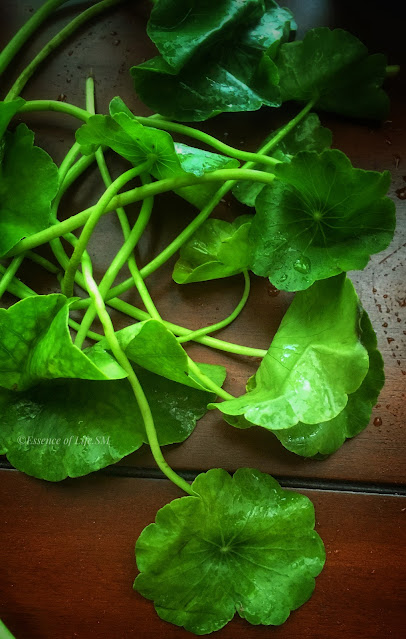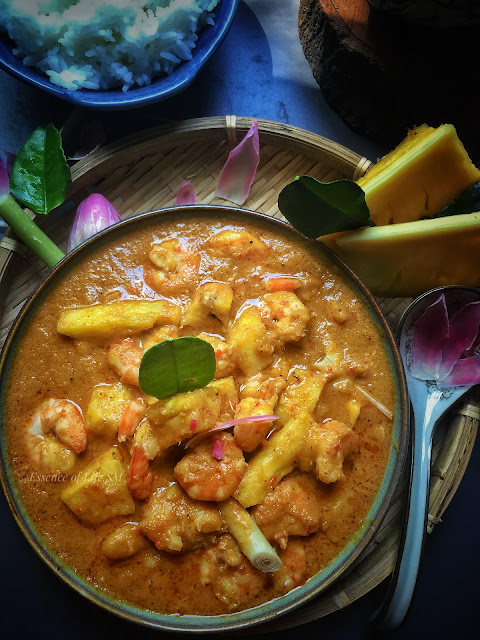 |
| Amma's Palakkadan Meen Puli Recipe |
"Amma's Palakkadan Meen Puli: A Taste of Kerala's Culinary Heritage"
Culinary Exploration After Marriage - Adapting to New Tastes and Traditions
Getting married is undoubtedly a sudden exposure to new things: food, culture, lifestyle. This is universal across gender, communities, and regions. It also means a lot of effort to get acquainted with and start loving the host of new things in life. It’s not that one does all of it spontaneously, nor are you forced into it. With time, you get used to it, some you learn to brush away with a smile, and some you adapt to with a smile. Getting to love new food and new tastes is always an uphill task. A dish that you never had in life might be a favourite in your in-law’s house. Either your mother-in-law cooks it with pride or tries to teach you with precision. That is how heirloom recipes are preserved and passed on. Humans are by nature flexible and adaptable, and often we begin recreating such dishes that were once new to our taste buds with minor changes to suit tastes.
Family Background and Culinary Influences
My story, like so many others, followed similar lines. Though our family had an ancestry from a small town in Kerala, Palakkad, my parents lived in Coimbatore. Quite similar was the scenario at my husband’s house—they hailed from Cochin & Chalakkudy but had settled in Coimbatore. Yet, we were quite apart in the food we had. The way of cooking differed widely, and it can be categorized as two different styles of cooking when it comes to both vegetarian and non-vegetarian dishes, snacks, desserts, etc. Years spent in Coimbatore made both my parents and in-laws more open to tastes, and they started adapting to Coimbatore's Diverse Food Culture. They loved vada, idli, dosa, and sambar and also made quite a number of Tamil recipes at home.
Rediscovering Palakkadan Meen Puli
Today let's talk about Palakkadan Style Fish Curry, colloquially known as Meen Puli, which is my Mom & Dad's speciality dish from their hometown Palakkad. Interestingly, I never had much of an impression about this curry during my early years. Later, after getting acquainted with various fish curry recipes, I developed a taste for Kerala fish curries made with raw mangoes and coconut milk. A few years back, my taste buds began yearning for my mother's cooking, prompting me to start asking for her specialities and trying them out in my kitchen. Initially, my mom's recipes weren't my first choice except for Gothambu Payasam, Palakkadan Koottu Kari, and Aviyal. Gradually, as my taste buds missed home and mom, I began to yearn for her other dishes too. This led me to remember my mom's Palakkadan Meen Puli. Following suit were Vendakka Puli, Kaya Puli, Cheerem Parippum, her special Palakkadan Inji Curry with shallots. If you are into Palakkadan Cuisine, you can find a few Authentic Palakkadan Recipes from my Mom & Dad's repertoire in my blog.
 |
Amma's Specialities and Family Nostalgia
Amma's Palakkadan Style Fish Curry (Meen Puli) is a quintessential dish from Palakkad cuisine, cherished for its unique tangy and spicy flavours. This traditional Kerala fish curry uses tamarind as the primary souring agent, infusing the dish with a distinctive tartness that beautifully complements the spices. The curry features small fish simmered in a luscious coconut and shallot paste, with a hint of jaggery to balance the flavours. It is a beloved recipe in my family, especially enjoyed by my father (Achan), and holds a special place in my heart as one of Amma's signature dishes. This curry not only represents the rich culinary heritage of Palakkad, but also evokes fond memories of my childhood, making it a nostalgic and comforting meal.
Cooking Amma's Palakkadan Meen Puli
 |
Ingredients for Palakkadan Meen Puli:
Fish - 10-12 small pieces (preferably small fish)
Coconut Oil - 1 Tablespoon
Fenugreek Seeds - 1/4 Teaspoon
Curry Leaves - A Sprig
Turmeric Powder - 1/4 Teaspoon
Tamarind Paste - 1 Teaspoon
Jaggery - a Pinch (Optional)
For the First Spice Paste:
Shallots - 3-4
Red Chilli Powder - 1 1/2 Teaspoons
Coriander Powder - 1 1/2 Teaspoons
For the Second Spice Paste:
Coconut - 1/4 Cup
Shallots - 2-3
Method for Cooking Palakkadan Meen Puli:
Prepare the First Spice Paste:
- Grind the shallots with red chilli powder and coriander powder to a fine paste. If using whole spices, lightly toast them in a dry pan until aromatic before grinding.
Prepare the Second Spice Paste:
- Grind the coconut and shallots to a smooth paste and set aside.
 |
Cooking the Curry:
- Clean, wash, and pat dry the fish. Make small slits over the fish.
- Heat the coconut oil in a pan and splutter fenugreek seeds on a low flame.
- Immediately add curry leaves and give a quick stir.
- Add turmeric powder and fry on a low flame for a few seconds.
- Mix the first spice paste with tamarind paste and add it to the pan. Let it come to a rolling boil and cook until the raw flavour disappears.
- Add the fish to the curry and cook briefly.
- Pour in the second spice paste and simmer on a very low flame until the raw flavour goes, and the curry reaches the desired consistency.
- Add a pinch of jaggery just before switching off the flame.
Serving:
- Serve Meen Puli hot with rice.
Notes & Tips for Perfecting Palakkadan Meen Puli:
- The authentic version of Meen Puli calls for whole dry red chillies and coriander seeds.
- If using whole spices, begin by heating a teaspoon of oil. Gently fry the dry chillies on low heat until they start to puff. Next, incorporate coriander seeds, continuing to fry on low heat until they emit a delightful aroma. Blend these spices with shallots.
- This recipe utilizes tamarind paste for convenience. However, traditional tamarind can also be used; soak it in warm water, then squeeze and strain to obtain the extract.
- Ensure the Meen Puli simmers gently to eliminate any raw taste.
- Adjust the curry's thickness according to your liking.
- Adding jaggery is optional, but it adds a subtle sweetness that balances the tanginess.
- The flavours of Meen Puli deepen and enhance when enjoyed the following day.
 |
Preserving Palakkadan Culinary Heritage
Amma's Palakkadan Style Fish Curry, known as Meen Puli, embodies the rich culinary heritage of Palakkad. This cherished Kerala dish, with its tangy tamarind-infused flavours and aromatic spices, not only delights the palate but also evokes nostalgic memories of home-cooked meals. Discover more authentic Palakkadan recipes on my blog, where each dish tells a story of tradition, family, and the vibrant flavours of Kerala cuisine.

































